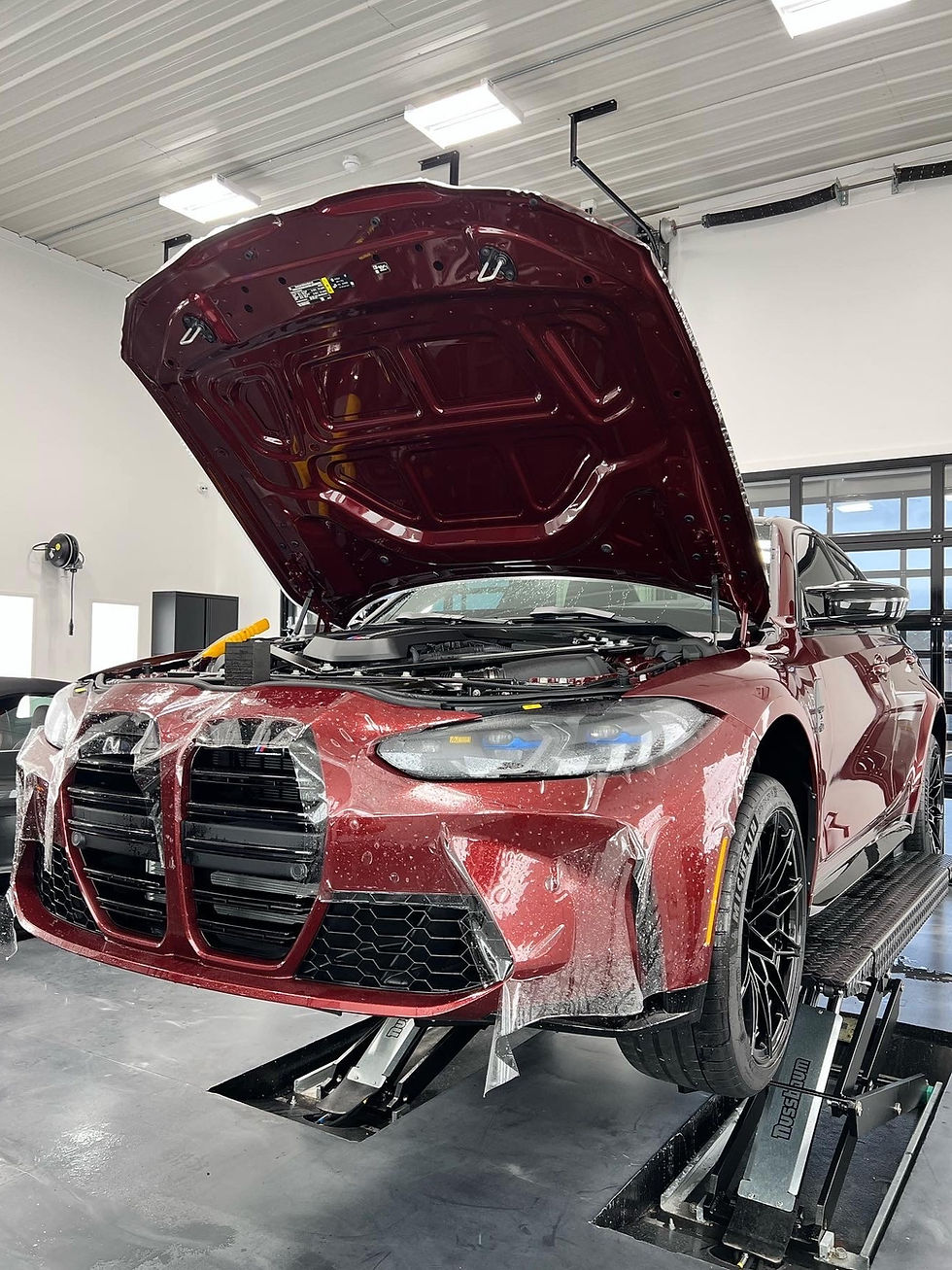The Science Behind Car Polishing and Paint Correction
- Motorcar Paint Protection

- Aug 7, 2024
- 3 min read
Car enthusiasts and everyday drivers alike appreciate a vehicle that shines with a flawless finish. Achieving and maintaining this look often requires more than a simple wash and wax. This is where car polishing and paint correction come into play. These processes involve a combination of science, skill, and the right tools to restore a vehicle’s paint to its original glory. Let's delve into the science behind car polishing and paint correction to understand how they work and why they are essential for maintaining a car's appearance.

What is Car Polishing?
Car polishing is a process that removes minor imperfections from a vehicle's paint surface, such as scratches, swirl marks, oxidation, and water spots. It involves the use of abrasive compounds and polishing pads to smooth out the surface, enhancing the car's gloss and shine. Polishing can be done by hand or with a machine, though machine polishing is typically more effective and consistent.
The Science of Abrasion
At the heart of car polishing is the science of abrasion. Polishing compounds contain fine abrasive particles that gently remove a thin layer of the clear coat (the outermost layer of the car's paint). This process levels out the surface, eliminating imperfections and revealing a smoother, more reflective finish beneath. The key is to use the right level of abrasiveness for the job. Too coarse, and you risk damaging the paint; too fine, and you might not achieve the desired results.
Types of Polishing Compounds
Polishing compounds come in various levels of abrasiveness, categorized as:
Heavy-Cut Compounds: These are used for severe defects and have larger abrasive particles. They remove more material and are followed by finer compounds to achieve a smooth finish.
Medium-Cut Compounds: Ideal for moderate imperfections, these compounds balance effectiveness and safety.
Finishing Polishes: These have the finest abrasives, designed to refine the surface and maximize gloss after more aggressive compounds have been used.
What is Paint Correction?
Paint correction goes beyond basic polishing. It is a multi-step process aimed at removing deeper imperfections and restoring the paintwork to a like-new condition. This process requires a thorough understanding of the paint’s condition and the appropriate techniques and products to use.
Steps of Paint Correction
Inspection: The first step is to thoroughly inspect the paint to identify all imperfections. This often involves using specialized lighting to highlight defects that might be invisible under normal lighting conditions.
Decontamination: Before correcting the paint, it’s essential to remove all surface contaminants, such as tar, sap, and industrial fallout, using a clay bar or chemical decontaminants. This ensures a clean surface for polishing.
Compounding: Using heavy-cut compounds and a machine polisher, the deepest scratches and imperfections are addressed first. This step removes the most material and requires careful control to avoid damaging the paint.
Polishing: After compounding, medium-cut and finishing polishes are used to refine the surface. This multi-step approach ensures that all defects are removed and the paint achieves maximum clarity and gloss.
Protecting: Once the paint correction is complete, it’s crucial to protect the newly restored finish. This can be done using wax, sealants, or ceramic coatings, which provide a protective layer and help maintain the shine.
The Role of Machine Polishers
Machine polishers, such as dual-action (DA) polishers and rotary polishers, play a significant role in both polishing and paint correction.
Dual-Action Polishers: These are user-friendly and safer for beginners. They oscillate and rotate, reducing the risk of burning the paint.
Rotary Polishers: These provide more power and are used by professionals for severe defects. However, they require more skill to avoid damaging the paint.

The Importance of Technique
Successful car polishing and paint correction rely heavily on technique. Factors such as the speed of the machine, the type of pad, the amount of pressure applied, and the duration of polishing all influence the outcome. Proper technique ensures that imperfections are effectively removed without causing additional damage to the paint.
Car polishing and paint correction are intricate processes that combine the science of abrasion with skilled application. These techniques can dramatically improve a vehicle's appearance by removing imperfections and restoring the paint’s original shine. Whether you're a car enthusiast looking to maintain your vehicle’s finish or a professional detailer aiming for perfection, understanding the science behind these processes is essential. With the right knowledge, tools, and techniques, you can achieve a flawless, mirror-like finish that enhances the beauty and value of any car.






